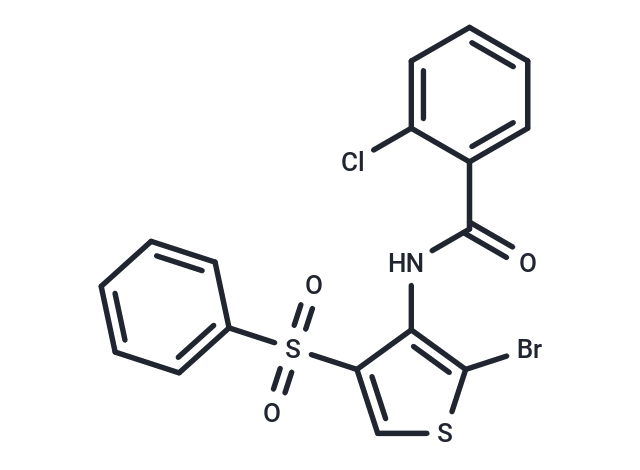Shopping Cart
Remove All Your shopping cart is currently empty
Your shopping cart is currently empty
BNTA is a potent extracellular matrix (ECM) modulator. In a rat model of arthritis, BNTA modulates arthritis by promoting the synthesis of cartilage structural molecules on chondrocytes through the induction of superoxide dismutase 3 (SOD3) and regulating chondrogenesis through superoxide anion elimination.

| Pack Size | Price | USA Warehouse | Global Warehouse | Quantity |
|---|---|---|---|---|
| 1 mg | $84 | In Stock | In Stock | |
| 5 mg | $198 | In Stock | In Stock | |
| 10 mg | $328 | - | In Stock | |
| 25 mg | $637 | - | In Stock | |
| 50 mg | $892 | - | In Stock | |
| 100 mg | $1,220 | - | In Stock | |
| 500 mg | $2,450 | - | In Stock | |
| 1 mL x 10 mM (in DMSO) | $198 | In Stock | In Stock |
| Description | BNTA is a potent extracellular matrix (ECM) modulator. In a rat model of arthritis, BNTA modulates arthritis by promoting the synthesis of cartilage structural molecules on chondrocytes through the induction of superoxide dismutase 3 (SOD3) and regulating chondrogenesis through superoxide anion elimination. |
| In vitro | BNTA (0.01-10 μM; 1-7 days) exhibits no reduction in cell viability for human osteoarthritis chondrocytes and primary chondrocytes isolated from rats.[1] BNTA (0.1 μM; 2 days) induces a significant elevation in SOX9 protein expression. Notably, BNTA markedly enhances the protein levels of COL2A1 and SOX9 in rat osteoarthritis (OA) chondrocytes induced by IL1β.[1] BNTA (0.01-10 μM; 6 hours) enhances the expression levels of extracellular matrix (ECM)-related genes, including COL2A1, ACAN, proteoglycan 4 (PRG4), and SRY-box 9 (SOX9) in human osteoarthritis (OA) chondrocytes. In IL1β-induced rat OA chondrocytes, BNTA elevates Col2a1, Acan, Prg4, and Sox9 mRNA levels, with the most significant effects observed around 0.1 μM.[1] BNTA (10 μM; 5 days) increases proteoglycan staining in ATDC5 cells.[1] BNTA (0.01-1 μM; 2 or 3 weeks) enhances anabolism and inhibits inflammatory response in osteoarthritis cartilage explants.[1] |
| In vivo | BNTA (0.015-1.5 mg/kg; intra-articular injection; twice a week for 4 and 8 weeks; Male SD rats) was well tolerated and reduced post-traumatic osteoarthritis progression following anterior cruciate ligament transection (ACLT) in rats.[1] |
| Molecular Weight | 456.76 |
| Formula | C17H11BrClNO3S2 |
| Cas No. | 685119-25-9 |
| Smiles | Clc1ccccc1C(=O)Nc1c(Br)scc1S(=O)(=O)c1ccccc1 |
| Relative Density. | no data available |
| Storage | Powder: -20°C for 3 years | In solvent: -80°C for 1 year | Shipping with blue ice/Shipping at ambient temperature. | |||||||||||||||||||||||||||||||||||
| Solubility Information | DMSO: 60 mg/mL (131.36 mM), Sonication is recommended. | |||||||||||||||||||||||||||||||||||
| In Vivo Formulation | 10% DMSO+40% PEG300+5% Tween 80+45% Saline: 2 mg/mL (4.38 mM), Sonication is recommended. Please add the solvents sequentially, clarifying the solution as much as possible before adding the next one. Dissolve by heating and/or sonication if necessary. Working solution is recommended to be prepared and used immediately. The formulation provided above is for reference purposes only. In vivo formulations may vary and should be modified based on specific experimental conditions. | |||||||||||||||||||||||||||||||||||
Solution Preparation Table | ||||||||||||||||||||||||||||||||||||
DMSO
| ||||||||||||||||||||||||||||||||||||
| Size | Quantity | Unit Price | Amount | Operation |
|---|

Copyright © 2015-2025 TargetMol Chemicals Inc. All Rights Reserved.